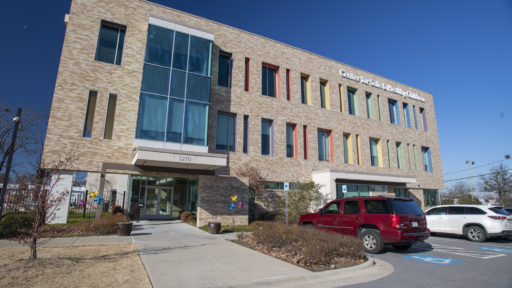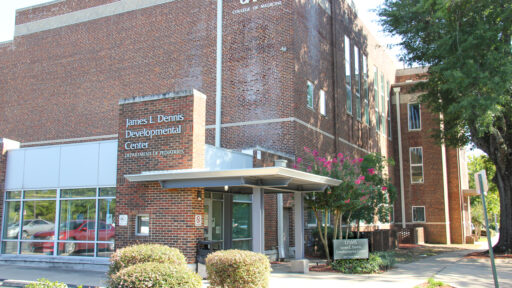Also called: ADHD
What is attention deficit hyperactivity disorder (ADHD)?
ADHD is a neurodevelopmental disorder. It is usually first diagnosed in childhood and often lasts into adulthood. But some people don't get diagnosed with ADHD until they are adults. ADHD involves:
- Having trouble paying attention (inattention)
- Having trouble controlling impulsive behaviors (impulsivity)
- Being overly active (hyperactivity)
What are the types of attention deficit hyperactivity disorder (ADHD)?
There are three types of ADHD:
- Mostly Inattentive ADHD. People with this type of ADHD have trouble paying attention and are easily distracted. It's hard for them to organize or finish tasks. They may have trouble following instructions or conversations.
- Mostly Hyperactive-Impulsive ADHD. People with this type of ADHD have symptoms of both hyperactivity and impulsivity:
- With hyperactivity, people feel a need to always be moving. They have trouble sitting still and may fidget and/or talk too much.
- With impulsivity, people have trouble controlling their actions and words. They tend to act on sudden ideas or feelings without thinking about the possible results. They may interrupt others a lot or have trouble waiting their turn.
- Combined ADHD. People with this type of ADHD have a mix of inattentive and hyperactive-impulsive symptoms. Combined ADHD is the most common type.
It's normal to sometimes have trouble paying attention or sitting still, especially for children. But people with ADHD have more severe symptoms that can sometimes cause serious problems, for example, failing grades for a child or a job loss for an adult. The symptoms are ongoing and may affect family and social life, too.
What causes attention deficit hyperactivity disorder (ADHD)?
The exact cause of ADHD is unknown. ADHD probably results from a combination of factors, such as genetics and your environment. Researchers are looking at possible environmental factors that might raise the risk of developing ADHD. These factors include brain injuries, nutrition, and social environments.
What are the symptoms of attention deficit hyperactivity disorder (ADHD)?
The symptoms of ADHD depend on the type of ADHD a person has:
People with symptoms of attention problems may often:
- Miss details or make careless mistakes in schoolwork, at work, or in other activities
- Have trouble staying focused on play activities or work tasks
- Not seem to listen when spoken to directly
- Find it hard to follow instructions or finish tasks, or may start but get easily sidetracked
- Have trouble being organized, keeping belongings in order, and managing time
- Avoid doing tasks that require long periods of mental effort
- Lose important items, such as books, wallets, keys, eyeglasses, and cellphones
- Forget about doing daily activities
People with symptoms of hyperactivity-impulsivity may often:
- Fidget and squirm while seated
- Get up when staying seated is expected, such as at school or work
- Run around or climb when it's not appropriate (children) or feel restless (teens and adults)
- Have trouble doing quiet activities
- Be constantly moving or "on the go"
- Talk much more than is normal
- Blurt out answers before questions are completed
- Have trouble waiting for their turn
- Interrupt others for example during conversations or games
People with combined ADHD show a mix of inattention and hyperactivity-impulsivity symptoms
How is attention deficit hyperactivity disorder (ADHD) diagnosed?
There is no single test to diagnose ADHD. One step of the process for diagnosing ADHD involves having a physical exam, including vision tests, hearing tests (for children and adults), and other tests to rule out other problems with symptoms like ADHD. Other problems with similar symptoms include anxiety, depression, sleep problems, and certain types of learning disabilities.
The process also involves a thorough medical history and family history. And it usually includes using standardized ADHD symptom checklists, questionnaires, and/or interview questions. These tools have rating scales (scoring systems) that help the provider see if a person's symptoms and history fit a diagnosis of ADHD.
To make a diagnosis of ADHD, the provider needs to have found all of these things:
- Several symptoms of ADHD that began before age 12.
- Several symptoms of inattention and/or hyperactivity-impulsivity that have lasted for at least 6 months and cause serious problems:
- For children up to age 16, there must be at least 6 ongoing symptoms.
- For people 17 and older, there must be at least 5 ongoing symptoms.
- Symptoms that happen in 2 or more settings, for example, at home and at work or school.
- Symptoms that clearly get in the way of functioning well at school, work, and/or in social situations.
- Symptoms aren't caused by another mental health disorder.
What are the treatments for attention deficit hyperactivity disorder (ADHD)?
Although there is no cure for ADHD, treatments may help reduce symptoms and improve functioning. ADHD is commonly treated with:
- Medicines.
- Psychotherapy (talk therapy), including behavior therapy.
- Education or training for parents to give them the skills and strategies to help their child. This is especially important for younger children.
- A combination of these treatments.
Good treatment plans will include close monitoring, follow-ups, and making changes, if needed, along the way.
Having a healthy lifestyle, such as healthy eating and regular exercise, may also help manage symptoms.
For school-aged children, school support is important. This could include classroom-based behavioral interventions such as behavior management plans or teaching your child organizational and study skills. It may also include accommodations such as specific seating in the classroom, reduced classwork, or extended time on tests and exams.
NIH: National Institute of Mental Health
Courtesy of MedlinePlus from the National Library of Medicine.
Syndicated Content Details:
Source URL: https://medlineplus.gov/attentiondeficithyperactivitydisorder.html?utm_source=mplusconnect&utm_medium=service
Source Agency: National Library of Medicine
Attention-deficit/hyperactivity disorder
Attention-deficit/hyperactivity disorder (ADHD) is a behavioral disorder that typically begins in childhood and is characterized by a short attention span (inattention), an inability to be calm and stay still (hyperactivity), and poor impulse control (impulsivity). Some people with ADHD have problems with only inattention or with hyperactivity and impulsivity, but most have problems related to all three features.
In people with ADHD, the characteristic behaviors are frequent and severe enough to interfere with the activities of daily living such as school, work, and relationships with others. Because of an inability to stay focused on tasks, people with inattention may be easily distracted, forgetful, avoid tasks that require sustained attention, have difficulty organizing tasks, or frequently lose items.
Hyperactivity is usually shown by frequent movement. Individuals with this feature often fidget or tap their foot when seated, leave their seat when it is inappropriate to do so (such as in the classroom), or talk a lot and interrupt others.
Impulsivity can result in hasty actions without thought for the consequences. Individuals with poor impulse control may have difficulty waiting for their turn, deferring to others, or considering their actions before acting.
More than two-thirds of all individuals with ADHD have additional conditions, including insomnia, mood or anxiety disorders, learning disorders, or substance use disorders. Affected individuals may also have autism spectrum disorder, which is characterized by impaired communication and social interaction, or Tourette syndrome, which is a disorder characterized by repetitive and involuntary movements or noises called tics.
In most affected individuals, ADHD continues throughout life, but in about one-third of individuals, signs and symptoms of ADHD go away by adulthood.
Courtesy of MedlinePlus from the National Library of Medicine.
Syndicated Content Details:
Source URL: https://medlineplus.gov/genetics/condition/attention-deficit-hyperactivity-disorder?utm_source=mplusconnect&utm_medium=service
Source Agency: National Library of Medicine














